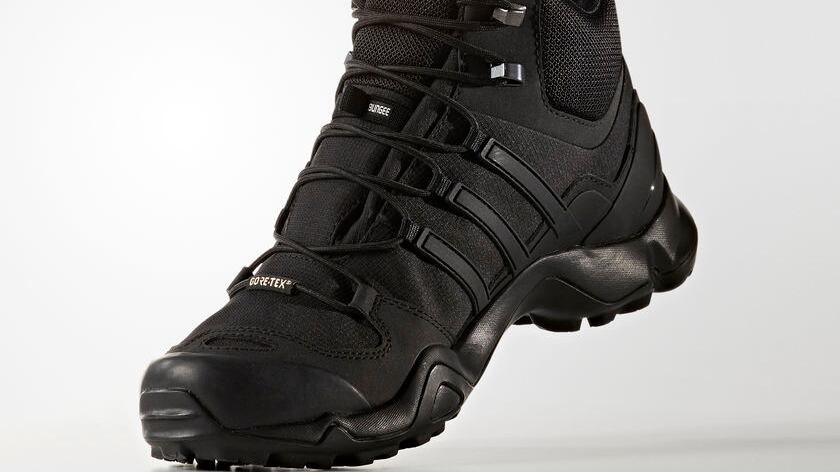Traditionally, hiking boots rank among the least fashionable things one can possibly wear. Long prizing functionality over style—after all, no one looks cool after dying of exposure—outdoorswear by and large has a sad aesthetic history of heinous silhouettes, dull earth tones and grumpily functional soles. They're well-suited for hiking up a mountain, and keeping your footsies dry as you trek through mud, but anathema to style, which explains why they are the preferred footwear of cheerful middle aged white people and gamers.
Last month, something changed. I had just gotten out of Blade Runner 2049, and spent a large portion of the film admiring Ryan Gosling's grim, militaristic detective outfit, especially his tactical boots. I'd later find out that those boots are real life cop boots made by security/law enforcement outfitter Bates. But at the time, I just wanted some kind of techy, futuristic looking boots for keeping my feet dry through the dreary Portland winter.
I started, foolishly, by doing what I usually do, which is to look in the most expensive possible place: Luxury fashion retailer Ssense. After spending a couple of hours browsing $480 duck boots and $1000 Givenchy (lol) combat boots I came to my senses and realized I should look somewhere much, much cheaper.
Then, I remembered my hiking boots.

I had bought a pair of Adidas Terrex Swift R Mid GTX early this year at the Adidas Employee Store in anticipation of a long weekend hiking in Manzanita and Cannon Beach. I thought they were fairly typical, inexpensive hiking boots ($82.50 down from $165, woo!), but as I was checking out the shop assistant explained to me that because the entire upper of the boot was lined with Gore-Tex and ripstop fabric the tongue affixed to the insides of the shoe, it is basically waterproof up to my ankles.
And so they are. On a wet, muddy hike to Cape Falcon outside of Manzanita in April, my Terrex Swift's repelled ankle deep sludge with ease, comfortably keeping my feet dry through five miles of uphill hiking. The waterproofing was astounding. After coming off especially gnarly passages with a half inch of mud adhered to the boots, I'd dip my feet in a puddle or stream, the muck washing away while the boot remained dry.

So I knew they'd hold up on normal Portland winter streets, and the thick treads should be able to handle light snow and nice without problem. But then I took another look at the design. After cleaning all of the dried mud off of my boots, the black rubber outsole and black Gore-Tex/ripstop upper gave it the techy look that I was searching for. They looked surprisingly sharp when paired with black jeans and other synthetic outerwear, like my rain jacket.
I've been wearing my Terrex Swift boots around Portland when the weather is miserable, and I've been really digging the look, stomping around like a handsome, cyborg detective in a futuristic Los Angeles searching for meaning in a dark world. The Terrex is built for long hikes, not winter deluges, so they don't stay extremely warm in winter because, despite being waterproof, they're well-ventilated. But if you have a pair of thick socks, your toes shouldn't stay chilly for long, and they'll certainly stay dry.
The Terrex Swift is also available in a low top variant, which seems to me to defeat the purpose of a winter shoe, as your ankles are going to get wet. But if you go for that one, get the black/neon green colorway for the full "bad guy from late 90s sci-fi movie" look (this colorway is also about $40 off at the time of writing, as a bonus).
I love shopping and am always looking for an excuse for new stuff. But sometimes, the winter boot you're searching for is stowed away in the trunk of your car, covered in mud. And sometimes its also the hiking boot you're searching for.
(Cool Stuff is a new feature at Willamette Week where we feature product reviews, roundups, sales and other commerce and shopping-oriented content. All Cool Stuff reviews are editorially independent, meaning we provide honest reviews and aren't paid by the brands we write about. If you do choose to purchase something after following one of our links, Willamette Week may receive a commission, which helps fund our journalism.)
